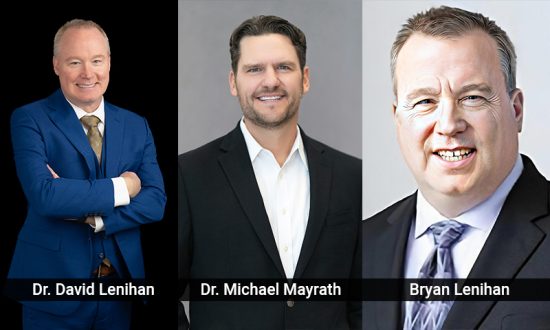The lack of socio-economic diversity among medical students is causing a growing healthcare and fiscal problem in the United States.
According to Frontiers, “approximately three-quarters of all medical students [and therefore future doctors] come from the top two household income quintiles, with approximately half from the top 20% and one-quarter from the top 5%.”
Because these students (and future doctors) will have little in common with or understanding of the socio-economic backgrounds of the patients for whom they’ll be caring, they’ll have diminished capabilities to build trust and communicate effectively with them. This absence of cultural competency decreases the probability of successful wellness/recovery results.
D.C.-based think tank Third Way elaborates on the disconnect by saying that it can result in patients “skipping yearly check-ups and vital preventive care, leaving chronic illnesses and other health complications to go unchecked. Delayed or missed care creates more visits to the doctor, worse outcomes, and higher costs.”
In 2015, Ponce Health Sciences University (PHSU) – a medical school with campuses in Ponce, Puerto Rico and St. Louis, MO – collaborated with Tiber Health Innovation (THI), an education technology company, to devise a remedy for this ailment.
Our methodology, which is the first and only of its kind, relies heavily on the usage of a predictive analytics variant of A.I./machine learning to create a data-centered approach to medical school admissions. This innovative strategy, when combined with a pre-medical school academic pathway program, allows us to accept qualified students from varying socio-economic backgrounds, which will ultimately increase physician workforce diversity.
Our model estimates student performance on the United States Medical Licensing Examination (USMLE) exam, which all medical students must pass in order to be eligible to practice as a physician. The model has been especially valuable when evaluating students from lower socio-economic backgrounds whose med school admission test scores (MCATs) are low, but are predicted to pass the USMLE Step 1 based on THI’s analytics platform.
Here’s how our predictive analytics component works:
After each classroom test in all academic courses within our pathway program, our students’ results are analyzed and available to be reviewed within 24 hours via an administrative portal. Our predictive analytics models offer rule-based remediation for the students that’s based on their test performance and shows them where they must focus in order to strengthen their future scores. This remediation not only helps them improve their grades, it’s also adhered to the rigors of the Step 1 exams.
To keep our analytics model relevant and valid, it incorporates the constant inflow of exam data to backtest, de-glitch, and regenerate.
Eventually, our model will offer what we refer to as generative prescriptive analytics. This output will provide student-specific, personalized exam score interpretation and academic guidance combining the test result data, faculty notes, and curriculum details.
Our research found that PHSU’s students from lower socio-economic backgrounds (and with reduced MCAT scores) whose pre-medical school academic experience was bolstered by our methodology performed as well as and often better on the Step 1 exams than our incoming students who had higher MCAT scores. This discovery is consistent with the finding that the MCAT is a weak to moderate predictor of success in medical school, especially for students from underrepresented and lower socio-economic backgrounds.
Incredibly, only one-third of 140 recently surveyed higher ed CIOs are interested in integrating A.I., machine learning, or adaptive learning into their schools’ curricula. This lack of enthusiasm must be reversed – especially if these schools wish to ramp up the socio-economic diversity of their student bodies and, by extension, of future doctors.
The multi-tiered benefits that are realized by increasing med student and doctor diversity are significant: the boost not only provides opportunities for improved trust and communication between healthcare professionals and their patients, it also delivers superior patient outcomes, reduced costs of care, and opportunities for ambitious and talented practitioners from non-affluent backgrounds to share their passion for healing with the world.
When paired with a specialized academic pathway program, A.I./machine learning can effectively prepare aspiring doctors from diverse socio-economic backgrounds for the demands of med school academics, the rigors of their Step 1 exams, and productive careers as skilled medical professionals.
About the Authors
Dr. David Lenihan
Dr. David Lenihan, Ph.D., J.D., FRSM, is the CEO of Ponce Health Sciences University (a medical school with campuses in Ponce, Puerto Rico and St. Louis, MO) and the co-founder of Tiber Health Innovation. His POVs on a variety of leadership, business strategy, and medical education topics have been featured in The HR Director, STAT, Entrepreneur, Fast Company, Forbes, Fierce Healthcare, Washington Post, Cureus, and many more.
Dr. Michael Mayrath
Dr. Michael Mayrath, M.S., Ph.D, is the President of Tiber Health Innovation. He’s co-founded numerous ventures, including Knod Global Learning Network and Magellan Education. He has conducted research and development for such organizations as the U.S. Air Force and Cisco, and was the lead editor of the book “Technology-Based Assessments for 21st Century Skills: Theoretical and Practical Implications from Modern Research” (Information Age Publishing – 2012).
Bryan Lenihan
Bryan Lenihan is the VP of Software Development/Analytics at Tiber Health Innovation. He has designed and implemented technology solutions for a variety of Fortune 500 companies, including Progress Energy, Duke Energy, Siemens, and Westinghouse.




